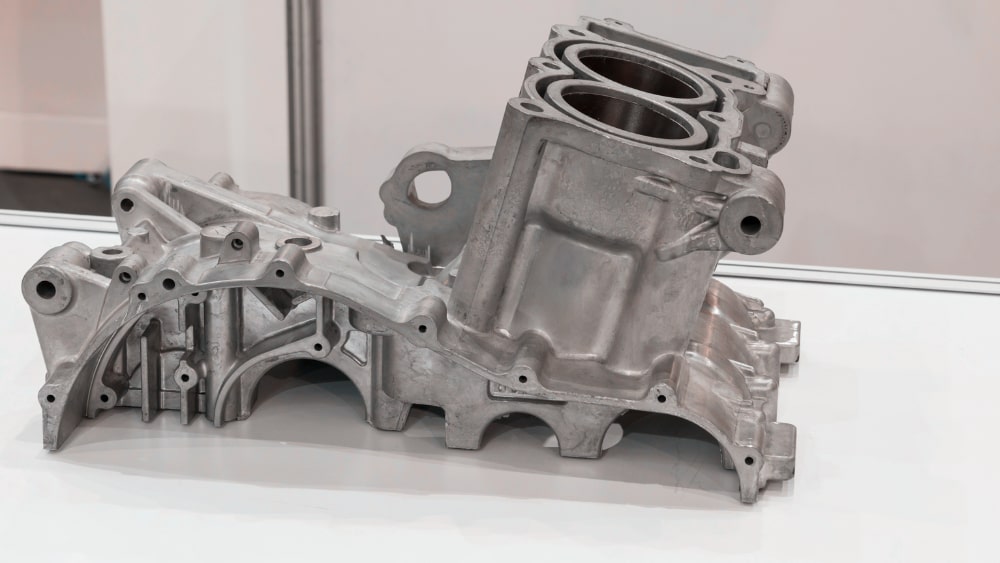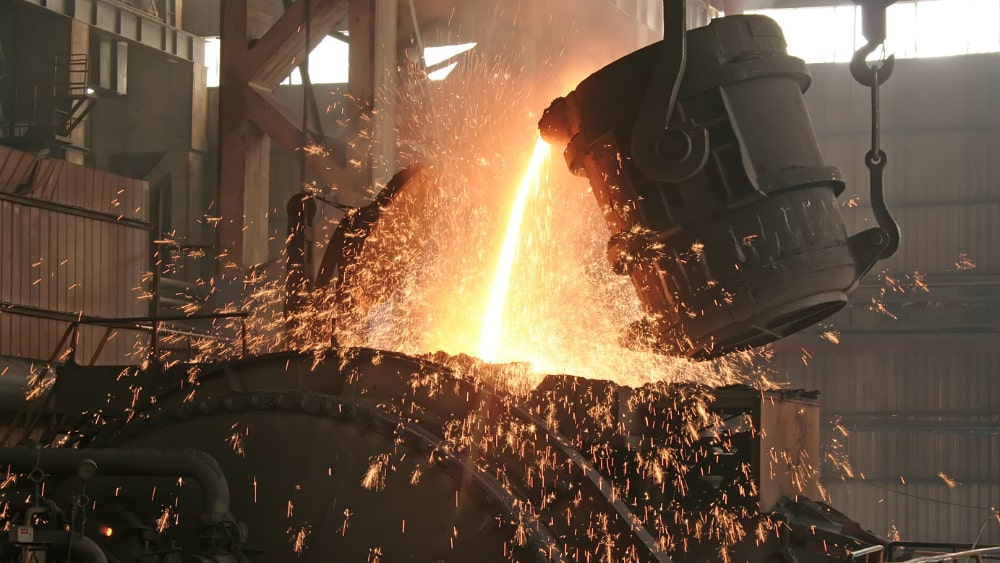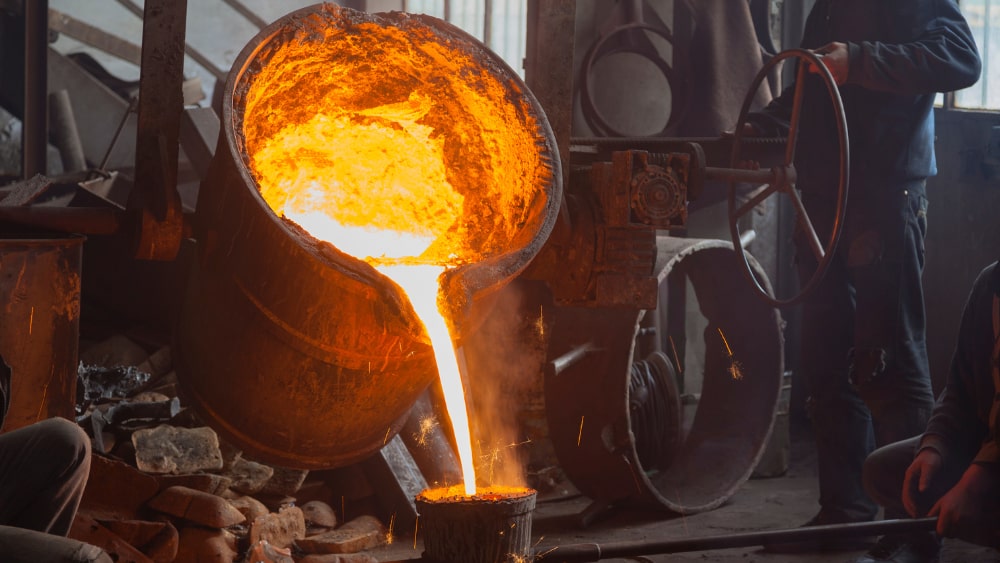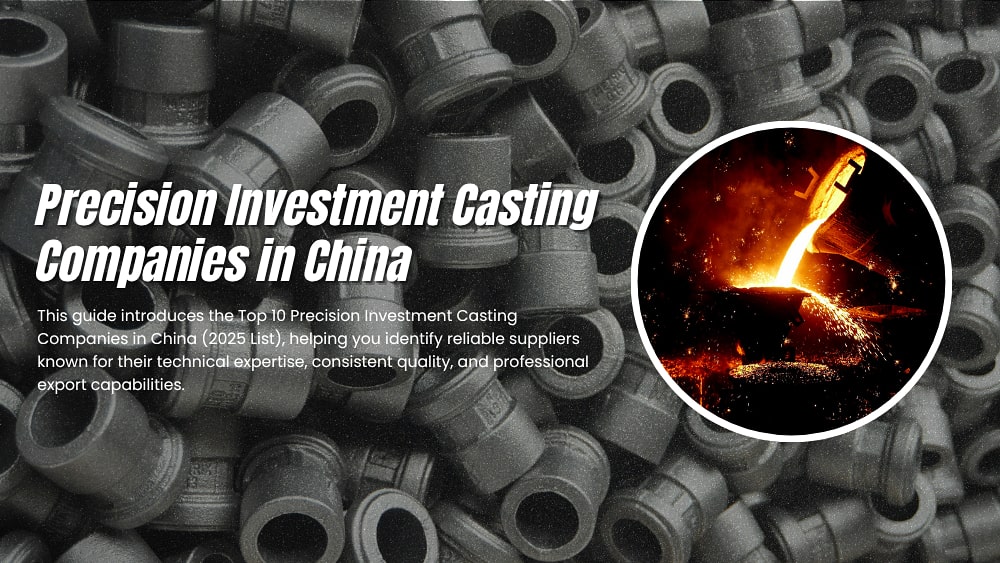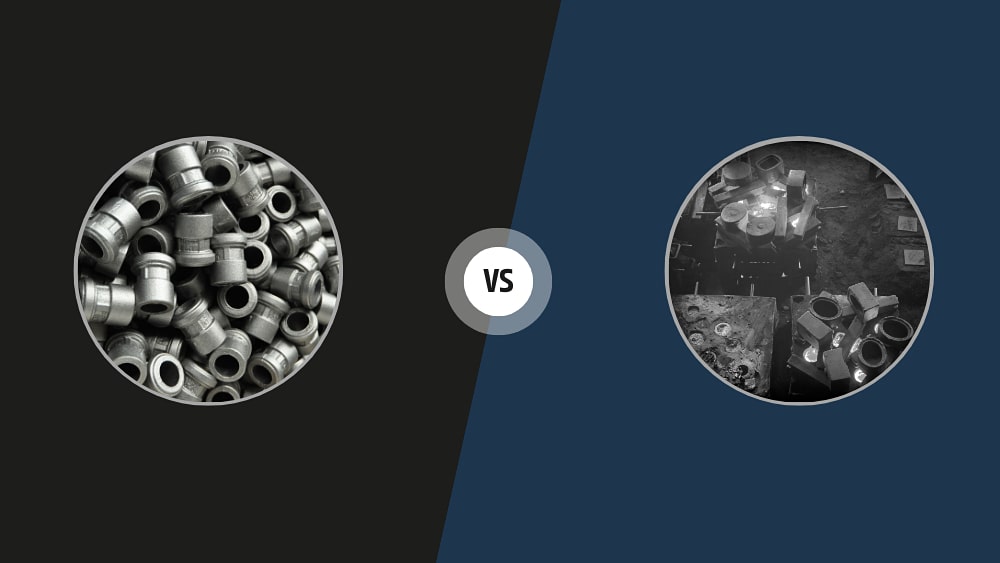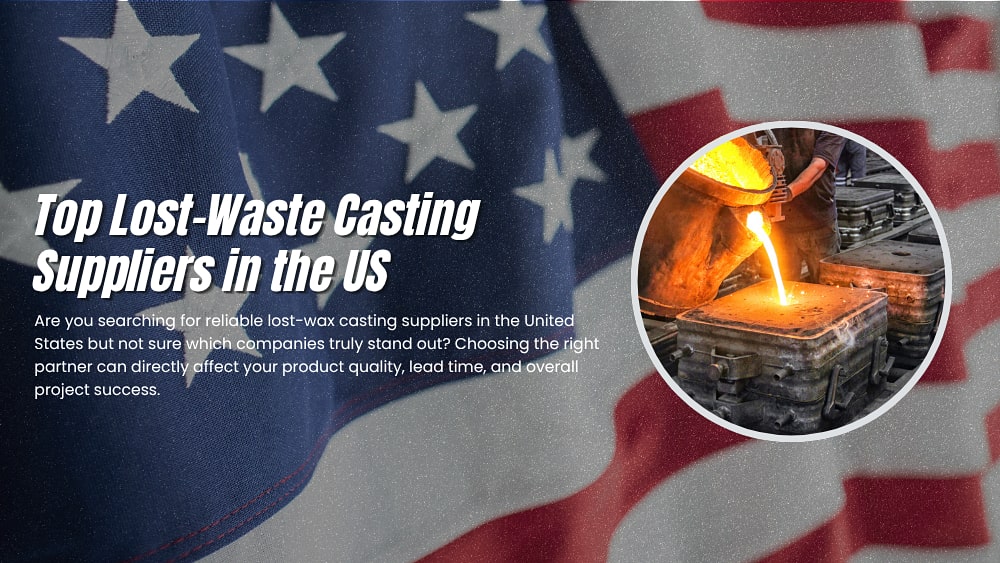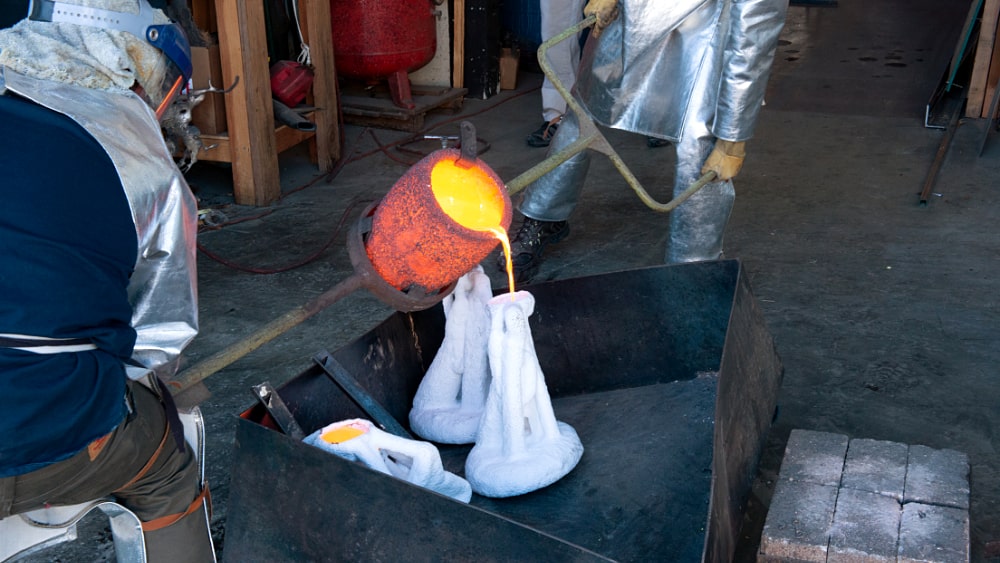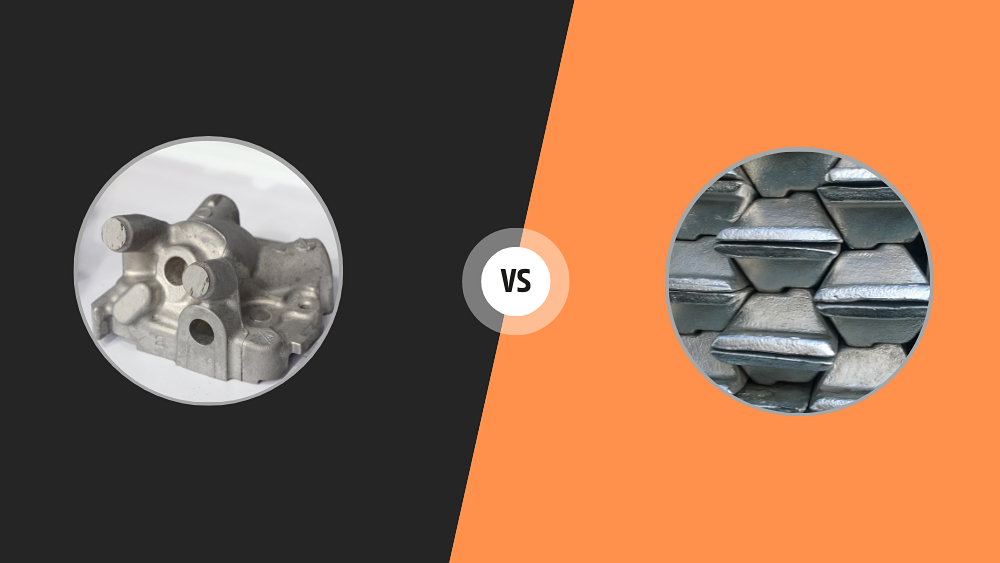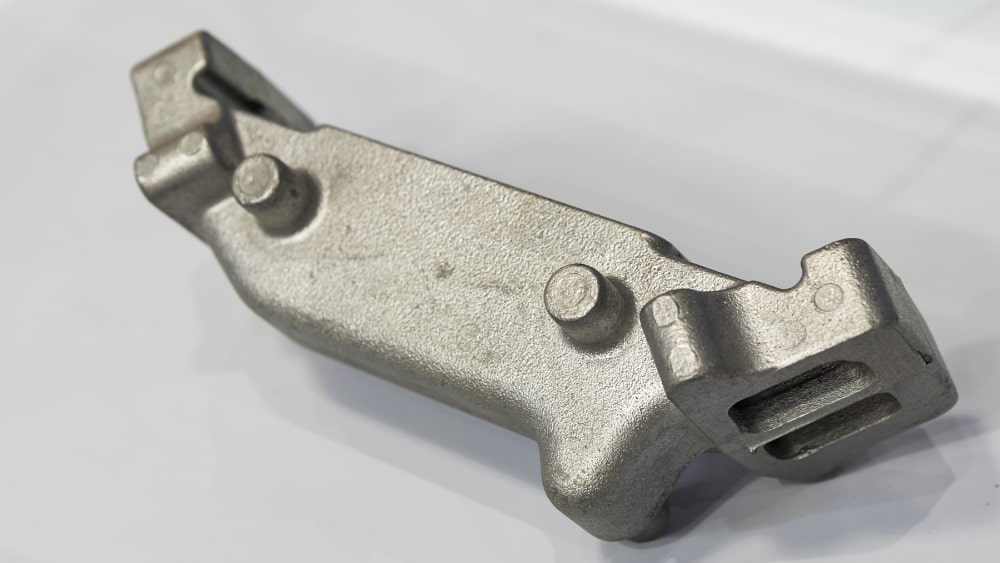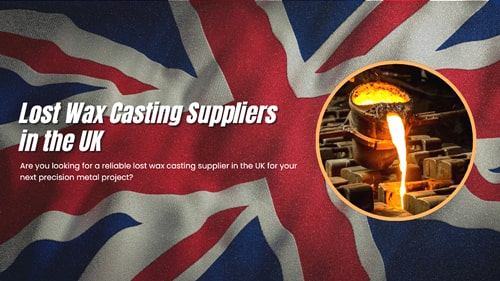Metal components power the modern world. From automotive engines to aerospace systems, construction, electronics, and heavy machinery, cast metal parts are essential for strengthening, supporting, and shaping countless products and industrial applications.
With its ability to deliver complex shapes, exceptional durability, and consistent performance, metal casting remains one of the most widely used manufacturing processes for metal components. In fact, the global metal casting market continues to grow as more industries rely on precision-cast parts to improve efficiency and product longevity.
Still, despite its versatility and long history, the metal casting process must be carefully engineered and tightly monitored to achieve the highest-quality results. This guide will break down what metal casting is, how it works, and how professional foundries control each stage to produce strong, reliable metal components. We’ll cover:
- What is Metal Casting?
- How Does Metal Casting Work?
- What Are the Different Types of Metal Casting Processes?
- Applications of Metal Casting
- Main Advantages of Metal Casting
- Limitations of Metal Casting
- Is Metal Casting Expensive? How Much Does It Cost?
- Qianhao Metal Casting Services
What is Metal Casting?
Metal casting is a manufacturing process in which molten metal is poured into a shaped cavity (the mold), allowed to solidify, and then removed and finished to produce a net- or near-net-shaped part. The mold defines the part geometry and can be permanent (reusable) or expendable (single-use). Casting enables complex internal and external shapes, integrated features, and parts that would be difficult or expensive to make by machining alone.
At its heart, casting is a materials and heat-management process: controlling metal chemistry, temperature, flow, and solidification determines whether a casting will meet dimensional, mechanical, and metallurgical requirements.
How Does Metal Casting Work?
Metal casting works by melting metal, pouring it into a mold, and allowing it to cool and solidify into a specific shape. While methods vary across casting processes such as sand casting, die casting, and investment casting, the core steps remain similar. The goal is to create a precise mold cavity, control molten metal flow, and achieve a final part that meets dimensional and structural requirements.
Step 1: Pattern and Mold Creation
The metal casting process begins with creating a pattern, which is a replica of the final metal component. Depending on the casting method, this pattern may be made from materials such as wax, wood, plastic, or metal. The pattern is used to form a mold cavity that shapes the molten metal. In sand casting, for example, the pattern is pressed into sand to create the cavity, while in die casting, a reusable steel mold is CNC-machined to the final geometry.
Step 2: Melting and Pouring
Once the mold is prepared, the selected metal alloy—such as aluminum, steel, iron, brass, or bronze—is melted in a furnace. When the metal reaches its proper pouring temperature, it is transferred from the furnace and directed into the mold through a carefully designed gating system. These channels regulate flow, reduce turbulence, and help ensure proper mold filling. After pouring, the molten metal begins to cool and solidify into the shape of the cavity.
Step 3: Cooling and Solidification
During cooling, the molten metal transforms into a solid metal structure. Cooling rates must be closely controlled since they affect grain structure, internal soundness, and mechanical properties. In many cases, risers or feeders are built into the mold to compensate for metal shrinkage, ensuring the final part remains dimensionally accurate and free of voids.
Step 4: Shakeout and Part Removal
After the casting has fully solidified, the mold is opened or broken apart to reveal the newly formed part. In expendable processes such as sand casting and investment casting, the mold is destroyed during removal. In reusable mold processes such as die casting, the mold is opened and closed repeatedly for ongoing production. At this stage, excess metal from the gating and riser system is removed.
Step 5: Finishing and Inspection
The final stage involves cleaning, machining, and inspecting the casting. Processes such as grinding, shot blasting, heat treatment, drilling, and CNC machining may be used to achieve the required tolerances and surface finishes. Once finished, the casting is thoroughly inspected for dimensional accuracy and internal soundness using visual checks or nondestructive testing methods like X-ray, ultrasonic testing, or dye penetrant.
What Are the Different Types of Metal Casting Processes?
| Process Name | Brief Process Principle | Key Characteristics | Typical Applications |
|---|---|---|---|
| Sand Casting | A mold is formed from moist sand around a pattern, which is removed to create a cavity. Molten metal is then poured in. |
Pros: Low cost, can produce very large or complex parts. Cons: Rough surface finish, low dimensional accuracy. |
Engine blocks, machine tool bases, art pieces. |
| Investment Casting | A precise wax pattern is made, coated with refractory material to form a monolithic mold. The wax is melted out, and molten metal is poured in. |
Pros: High dimensional accuracy, excellent surface finish, can cast complex parts. Cons: Process is complex, high cost, limited part size. |
Turbine blades, golf club heads, jewelry. |
| Die Casting | Molten metal is forced under high pressure into a reusable metal mold (die) and rapidly cools. |
Pros: Very high production rate, excellent dimensional precision, good surface finish. Cons: High equipment cost, typically only for non-ferrous metals (e.g., zinc, aluminum). |
Automotive parts (engine housings), toys, appliance shells. |
| Permanent Mold Casting | Molten metal is poured into a reusable metal mold (gravity casting) by gravity. |
Pros: Reusable mold, fine grain structure and good mechanical properties. Cons: Mold cost higher than sand casting, rapid cooling can cause defects. |
Pistons, wheels, brake drums. |
| Centrifugal Casting | Molten metal is poured into a high-speed rotating mold. Centrifugal force pushes the metal against the mold wall to form the part. |
Pros: High density castings, free of shrinkage cavities and gas pores. Cons: Specialized equipment, poor inner surface quality. |
Pipes, cylinder liners, symmetrical rings. |
| Lost Foam Casting | A pattern is made from foam, which is not removed but buried in unbonded sand. During pouring, the foam vaporizes and is replaced by metal. |
Pros: No need for mold parting lines, high design freedom, no draft angle needed. Cons: Foam pattern cost, produces fumes during pouring. |
Automotive cylinder heads, complex machine tool structures. |
To help you better remember these processes, focus on their core attributes:
- Need to make something large and cheap? → First choice is Sand Casting.
- Need to make something highly detailed and complex (like a hollow blade)? → First choice is Investment Casting.
- Mass-producing small, precise parts from non-ferrous metals (e.g., zinc toy)? → First choice is Die Casting.
- Batch-producing quality aluminum/copper alloy parts? → Consider Permanent Mold Casting.
- Making a cylindrical part (like a pipe)? → Use Centrifugal Casting.
- Making a complex sand casting and want to eliminate parting lines? → Consider Lost Foam Casting.
I hope this table and summary help you clearly understand the different metal casting processes!
Applications of Metal Casting
Metal casting is one of the most versatile and fundamental manufacturing processes, with applications spanning nearly every sector of industry. Its core advantage is the ability to create complex, solid metal components in a single step, from a few grams to hundreds of tons.
| Industry | Specific Applications | Why Casting is Used |
|---|---|---|
| Automotive | Engine blocks, cylinder heads, pistons, transmission cases, brake discs/calipers, wheels, turbocharger housings. | High volume production, excellent strength-to-weight ratio, ability to create complex internal passages (e.g., for coolant in an engine block). |
| Aerospace & Defense | Turbine blades and vanes, engine structural cases, landing gear components, missile and satellite parts. | Ability to cast high-performance alloys (e.g., superalloys), create complex, lightweight geometries that are near-net-shape, and produce parts with high-temperature resistance. |
| Industrial & Machinery | Pump and valve housings, compressor bodies, gearboxes, machine tool bases and frames, agricultural machinery parts. | Produces heavy, durable components, excellent wear resistance, cost-effective for large parts, and allows for complex internal cavities. |
| Construction & Infrastructure | Pipe fittings, manhole covers, structural steel connectors, decorative elements (fences, gratings). | High durability, corrosion resistance (depending on alloy), and low cost for large, simple shapes. |
| Consumer & Home Goods | Kitchen cookware (pots, pans), power tool housings, furniture parts, door handles, fittings, and fixtures. | Excellent heat distribution (for cookware), allows for aesthetic and ergonomic designs, and enables high-volume, low-cost production. |
| Art & Sculpture | Statues, monuments, jewelry, decorative art pieces. | Offers unparalleled freedom of form and detail to replicate an artist's original model exactly. |
Key Reasons for the Widespread Use of Metal Casting
- Design Freedom: Casting can produce virtually any shape, no matter how complex, including internal cavities and undercuts that are difficult or impossible with other methods like machining or forging.
- Material Versatility: Almost any metal or alloy can be cast, from common iron and aluminum to specialized stainless steels, brasses, bronzes, and high-temperature superalloys.
- Cost-Effectiveness for Complex Parts: For intricate components, casting is often far cheaper than machining a part from a solid block of metal or assembling it from multiple pieces.
- Ability to Produce Very Large Parts: Processes like sand casting are uniquely capable of producing massive single-piece components, such as ship propellers or turbine bases, weighing many tons.
- Near-Net-Shape Capability: Many casting processes (especially Investment and Die Casting) produce parts very close to their final dimensions, minimizing the need for additional machining and reducing material waste.
In summary, from the car you drive and the plane you fly in, to the water pipes under the street and the pan you cook with, metal casting is an invisible yet indispensable part of modern life.
Main Advantages of Metal Casting
Metal casting is a foundational manufacturing process valued for its unique capabilities. Here are its primary advantages in sequential order:
-
Design Freedom
Capable of producing parts with extremely complex geometries, intricate internal cavities, and undercuts that are difficult or impossible to achieve with other manufacturing methods.
-
Material Versatility
The process works with a vast range of metals and alloys, from cast iron and aluminum to bronze, steel, and specialized high-performance alloys.
-
Cost-Effectiveness
For complex parts, casting is often far more economical than machining from a solid block of metal or assembling multiple fabricated pieces.
-
Ability to Produce Large Parts
Uniquely suited for manufacturing very massive components as a single, integrated piece, which is impractical with other processes.
-
Near-Net-Shape Capability
Produces parts very close to their final dimensions, significantly reducing material waste and the need for secondary machining.
-
Excellent Mechanical Properties
Cast parts can be designed to have superior strength, durability, and wear resistance, with properties that can be enhanced through heat treatment.
In summary, these advantages make metal casting a dominant manufacturing method for creating complex, high-strength metal components efficiently and economically.
Limitations of Metal Casting
Despite its advantages, metal casting has several limitations that must be considered during the design and manufacturing process. The main constraints include:
-
Surface Quality Issues
Cast surfaces often require additional machining to achieve smooth finishes and precise tolerances.
-
Internal Defects
Common problems include porosity, shrinkage cavities, and inclusions that can compromise structural integrity.
-
Design Restrictions
Certain geometries like very thin walls or sharp corners are difficult to cast without defects.
-
High Initial Costs
Pattern and mold creation makes the process expensive for small production runs.
-
Safety Hazards
Involves risks from high temperatures, molten metal handling, and fume generation.
-
Limited Mechanical Properties
Generally lower strength and ductility compared to forged or wrought materials.
Understanding these limitations helps in selecting the most appropriate manufacturing method for specific applications and requirements.
Is Metal Casting Expensive? How Much Does It Cost?
Metal casting can be both affordable and expensive - it's all about your specific project requirements.
Budget-Friendly Options
-
Sand Casting
- Tooling Cost: $500 - $5,000
- Best for: Large parts, low volumes
- Good for: Prototypes and one-off pieces
Mid-Range Options
-
Investment Casting
- Tooling Cost: $1,000 - $10,000+
- Best for: Complex, detailed parts
- Typical use: Aerospace components, jewelry
High-Volume Solutions
-
Die Casting
- Tooling Cost: $10,000 - $100,000+
- Best for: Mass production
- Cost per part: Becomes very low at high volumes
What Really Drives the Price?
- Quantity matters most - higher volumes = lower cost per part
- Complexity costs more - simple shapes are cheaper
- Metal choice affects price - aluminum vs. steel vs. specialty alloys
- Size determines material cost - bigger parts need more metal
Real-World Price Examples
- Small machine part (sand cast): $20-50 each for 100 pieces
- Engine component (die cast): $5-15 each for 10,000 pieces
- Art sculpture (investment cast): $200-500 for single piece
When is Casting Worth the Cost?
-
Choose casting when:
- You need complex shapes
- Production volume is medium to high
- Part would be expensive to machine
-
Consider alternatives when:
- Only making a few simple parts
- Extreme precision is required
- You need the strongest possible material
Bottom Line: Get quotes from multiple foundries and be clear about your quantity, material, and quality requirements.
Qianhao Metal Casting Services
At Qianhao, metal casting is a core manufacturing capability. As part of our long-term development strategy, we are continuously upgrading our casting operations, focusing on efficiency, sustainability, and precision. By optimizing foundry processes and investing in modern equipment, we ensure stable quality, improved performance, and reliable delivery for customers around the world.
Our team of experts is always ready to support your next project with consistent, high-quality products. We offer a large catalog of casting options and provide fully customized solutions to meet your exact requirements. In addition to cast iron and steel components, we also support multiple casting processes such as sand casting, investment casting, and die casting, giving you flexibility in both performance and cost.
If you are unsure which casting process or material is best for your application, our engineering team is always available to provide professional guidance.


